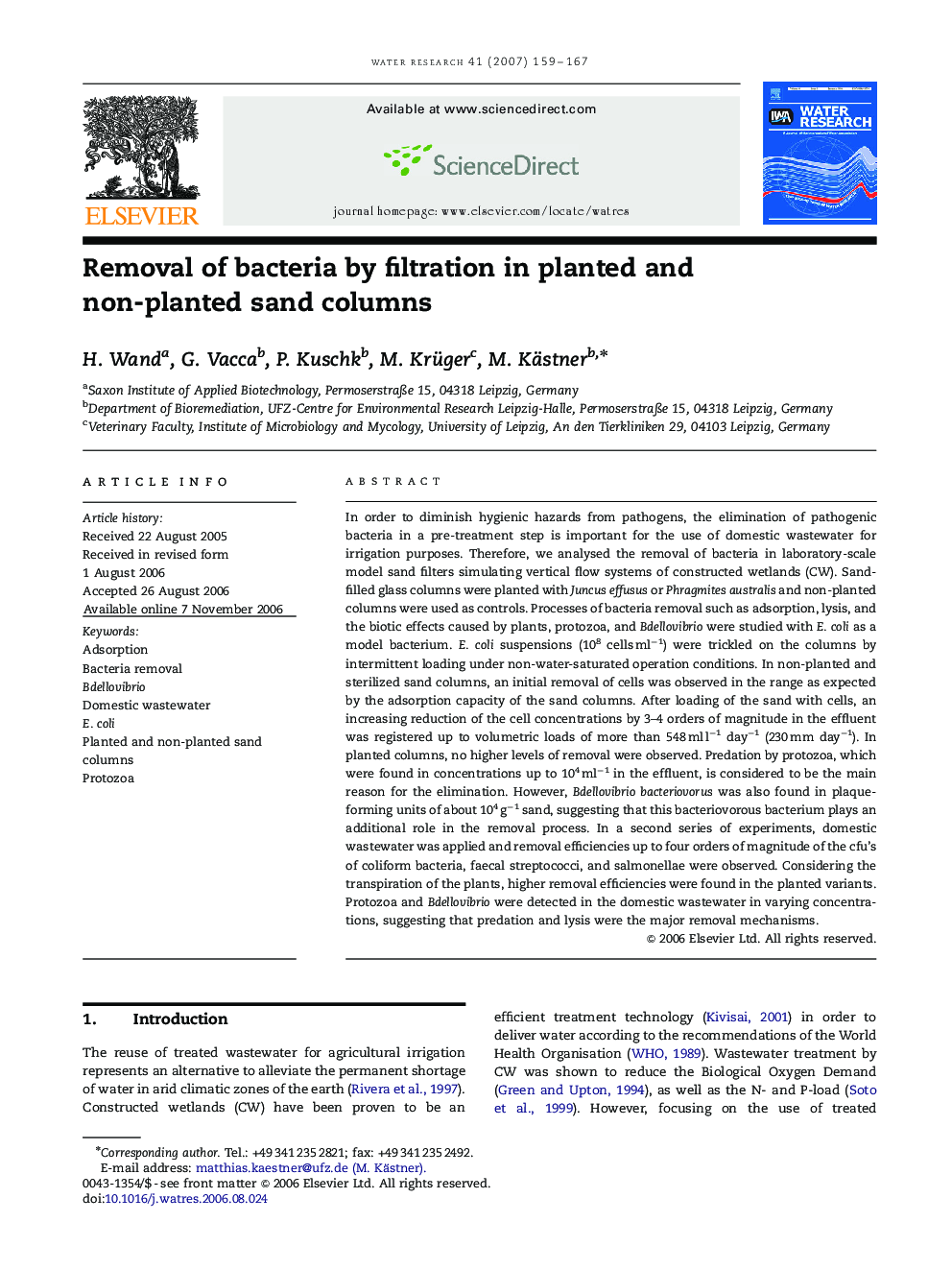| کد مقاله | کد نشریه | سال انتشار | مقاله انگلیسی | نسخه تمام متن |
|---|---|---|---|---|
| 4485672 | 1316961 | 2007 | 9 صفحه PDF | دانلود رایگان |

In order to diminish hygienic hazards from pathogens, the elimination of pathogenic bacteria in a pre-treatment step is important for the use of domestic wastewater for irrigation purposes. Therefore, we analysed the removal of bacteria in laboratory-scale model sand filters simulating vertical flow systems of constructed wetlands (CW). Sand-filled glass columns were planted with Juncus effusus or Phragmites australis and non-planted columns were used as controls. Processes of bacteria removal such as adsorption, lysis, and the biotic effects caused by plants, protozoa, and Bdellovibrio were studied with E. coli as a model bacterium. E. coli suspensions (108 cells ml−1) were trickled on the columns by intermittent loading under non-water-saturated operation conditions. In non-planted and sterilized sand columns, an initial removal of cells was observed in the range as expected by the adsorption capacity of the sand columns. After loading of the sand with cells, an increasing reduction of the cell concentrations by 3–4 orders of magnitude in the effluent was registered up to volumetric loads of more than 548 ml l−1 day−1 (230 mm day−1). In planted columns, no higher levels of removal were observed. Predation by protozoa, which were found in concentrations up to 104 ml−1 in the effluent, is considered to be the main reason for the elimination. However, Bdellovibrio bacteriovorus was also found in plaque-forming units of about 104 g−1 sand, suggesting that this bacteriovorous bacterium plays an additional role in the removal process. In a second series of experiments, domestic wastewater was applied and removal efficiencies up to four orders of magnitude of the cfu's of coliform bacteria, faecal streptococci, and salmonellae were observed. Considering the transpiration of the plants, higher removal efficiencies were found in the planted variants. Protozoa and Bdellovibrio were detected in the domestic wastewater in varying concentrations, suggesting that predation and lysis were the major removal mechanisms.
Journal: Water Research - Volume 41, Issue 1, January 2007, Pages 159–167